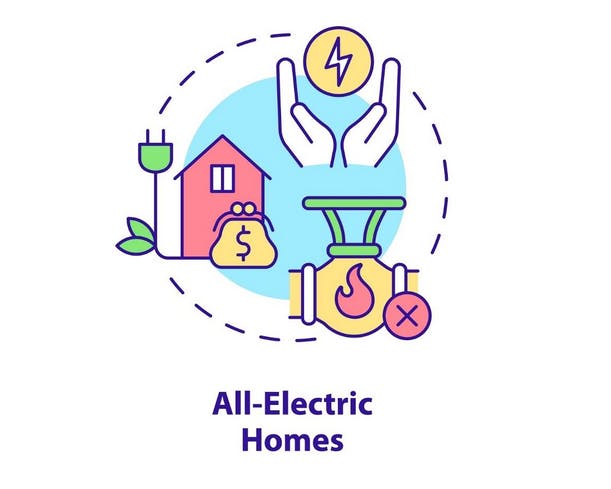More homeowners understand the importance of “decarbonizing” everything from products to transportation and especially their homes – but where to begin?
Buildings account for a large share of electricity use and combustion-related carbon dioxide emissions in the U.S. Going all-electric in and around the home would help eradicate nearly 75% of global emissions, research shows, especially if the energy itself came from solar or wind.
“The way we can best do this is by eliminating all fossil-fuel use from houses and including induction cooktops rather than gas for cooking,” points out Nate Kipnis of Kipnis Architecture + Planning in Chicago. Kipnis recommends using either an air-source heat pump (mini-split) for maintaining the home’s temperature or a ground-source system (geothermal).
Environmental groups believe the electrification of our economy will help stave off the effects of climate change. The Rocky Mountain Institute reports that reaching a targeted 75% reduction in greenhouse-gas emissions will require eliminating carbon emissions produced by gas-powered water heaters and furnaces across the country.
Our increased use of electronics and bigger appliances is also contributing to a surge in electricity demand. A report from the Energy Information Administration notes that residential electricity usage for appliances and electronics over the past three decades has jumped to 31% from 17% in a typical U.S. home.

The rise occurred even while energy-efficiency standards in home goods continue to improve. The decrease in energy usage has mostly come from the improvements made to heating equipment, along with better window design, insulation and construction techniques.
With governments starting to regulate greenhouse emissions at the household level, the construction of all-electric homes and converting older homes to 100% electricity is trending in the right direction. These homes include high-efficiency appliances, electric hot water systems and induction cooktops – more of them powered by solar.
There are several benefits to having an all-electric home. Among them, it:
- Reduces greenhouse gas emissions
- Benefits the environment by reducing pollution
- Saves consumers money over the long term
- Improves overall efficiency of the energy grid
The average cost of an Energy Star refrigerator is about $1500 with annual electricity savings of about $75, compared to older models, and an average lifespan of 13 years. A fridge more than 15 years old can use about 35% more energy than newer models.
New dishwashers are priced at around $970 nationally and save you about $40 a year on utility bills compared to older units. Just as notable, modern dishwashers are quieter and use less water during an average 10-year lifetime.
There are still many home cooks that prefer to use gas, but electric induction cooktops have improved while also saving on energy bills. (Using an electromagnetic field from a special coil below the glass, an induction cooktop transfers energy directly to a compatible pot/pan, which heat up almost instantly.) A new electric model can run about $1475 while gas ranges are about $1650. The other benefit is indoor air quality; by not burning gas, people can avoid the release of harmful pollutants in the home like carbon monoxide and nitrogen oxide.
Energy Star certified washing machines can cost about $1100 and last an average of 10 years. They also tend to spin faster during the drying process, meaning clothes will require less energy to dry out. Dryers run about $1200, last about 13 years and use at least 20% less energy than older models and are “smarter.” Since dryers consume more energy than any other appliance, air drying clothes is the best option when possible.
Our state has an ambitious target of achieving zero fossil-fuel greenhouse emissions in all homes and buildings by 2030. Total electrification of a community – including both new and existing buildings – is likely several decades away, yet the technology continues to improve as costs decline.
In 2021, Seattle banned the use of gas in newly constructed commercial and multi-family residential homes. Single-family homeowners are still free to include electricity or gas in single-family and townhome residences – for now.
We’re moving in the right direction – but is it fast enough?
==========
We developed a guide called Smart-home Technology: Planning and budgeting for the newest advances in safe living. It’s yours to download free at the website Smart-Homes.Technology.
Since the guide was published, we produced another three stories related to smart-home tech:
- Smart Bedrooms – Products and Setup for a Better Way of Life
- Smart Switches – Intelligently Adding Convenience in the Home
- Light Bulbs – Selecting the Right Ones for the Home
To learn more about the average costs to purchase home items and their lifespans, check out this blog post from 2021.




